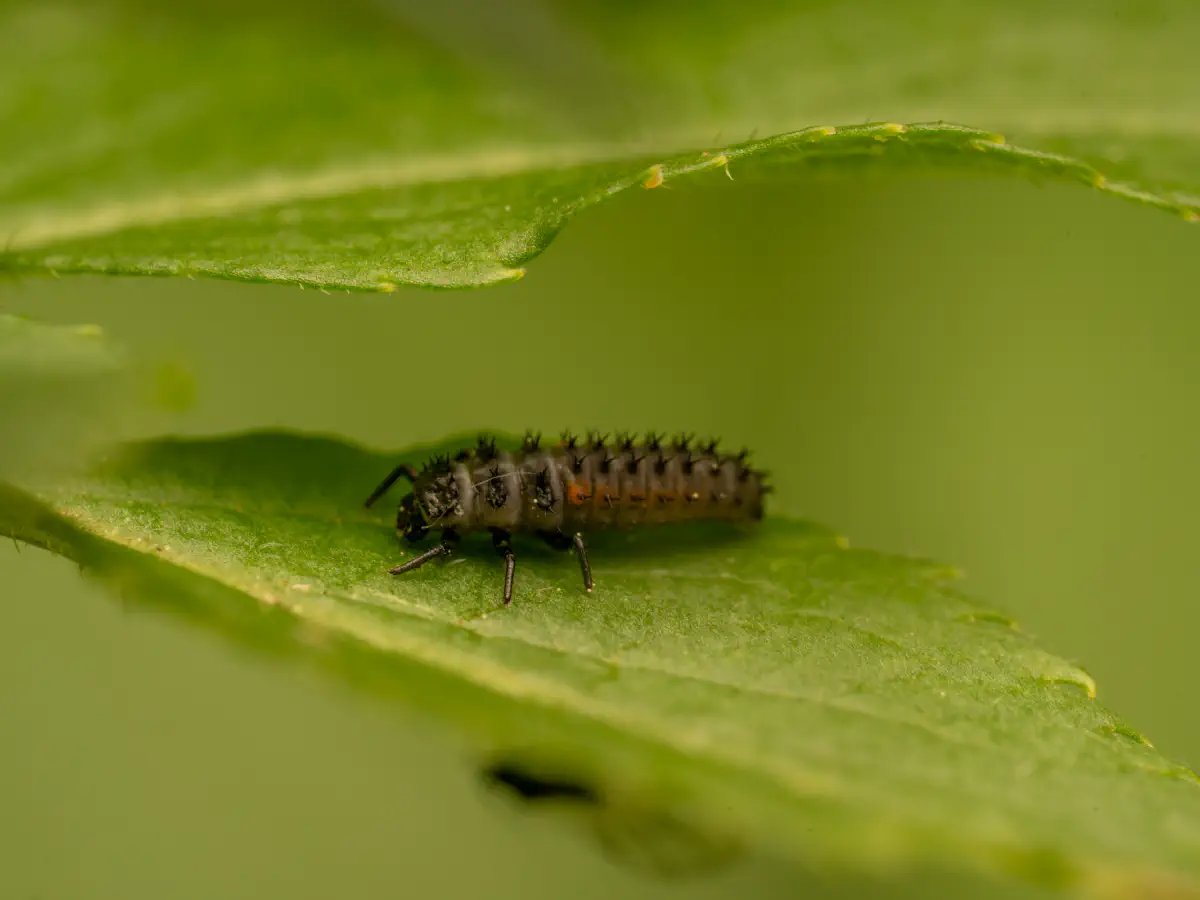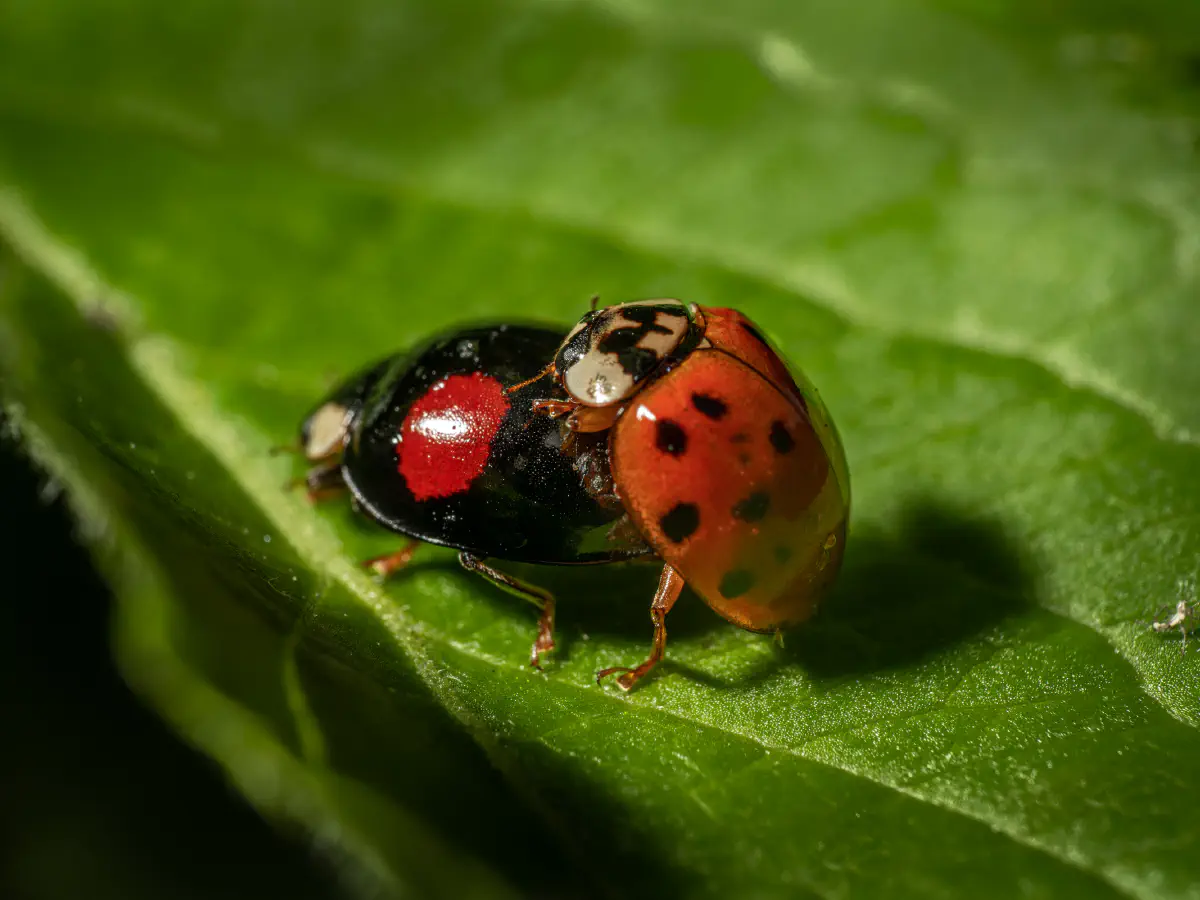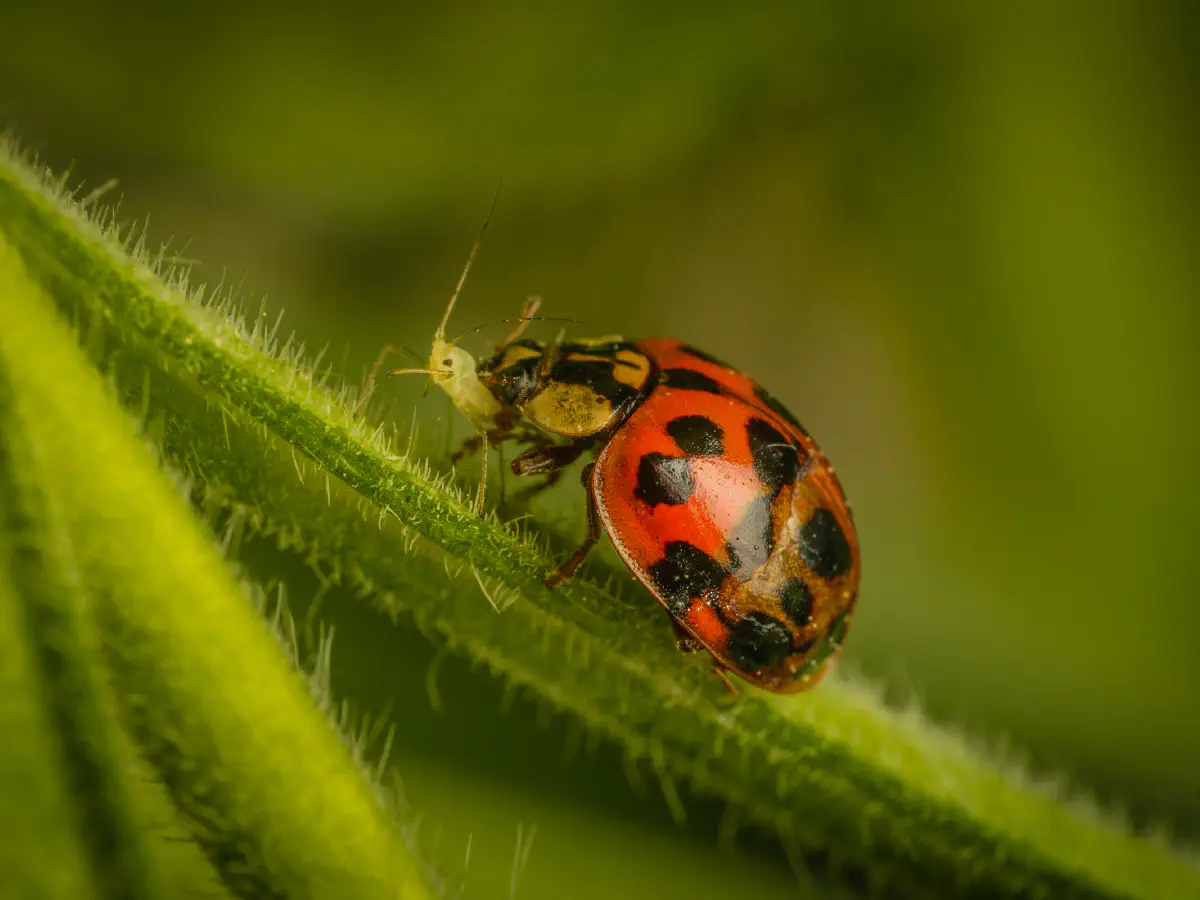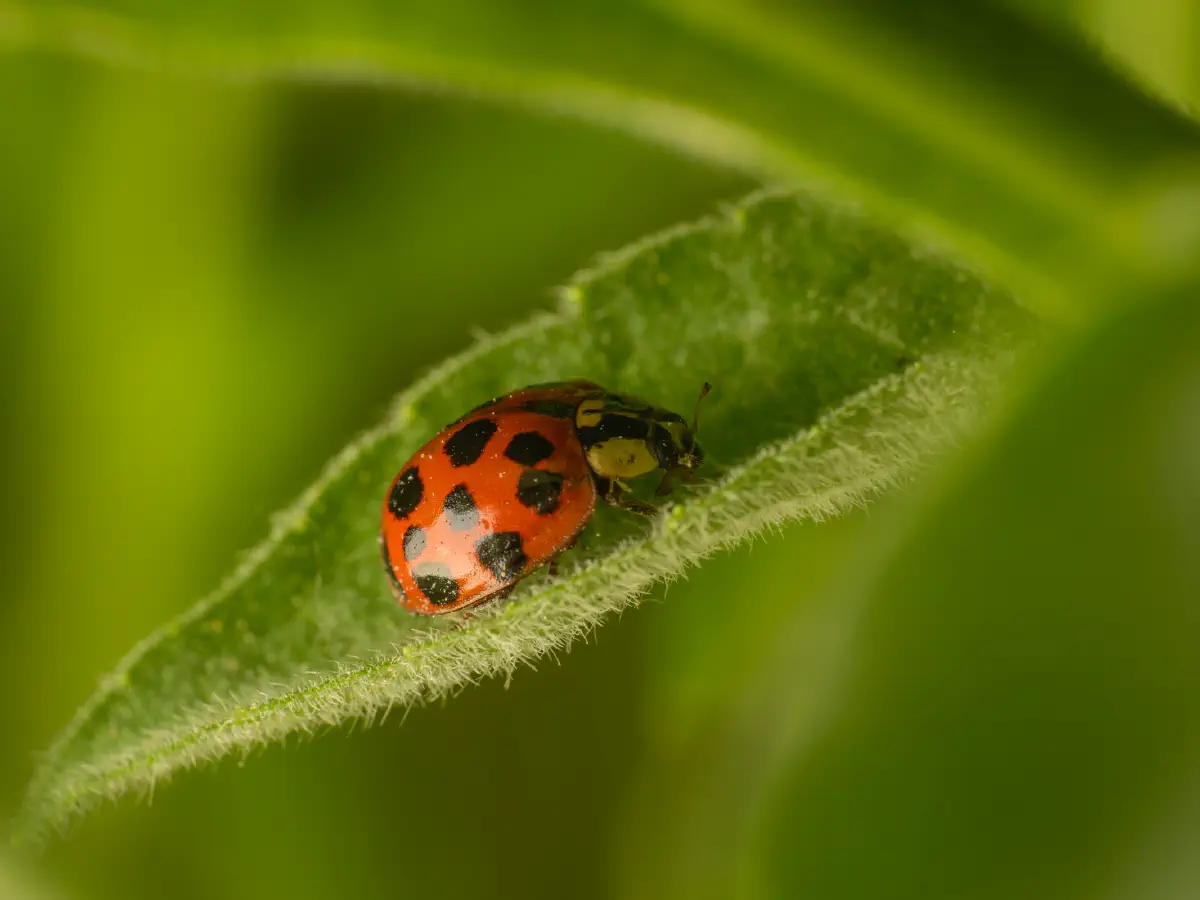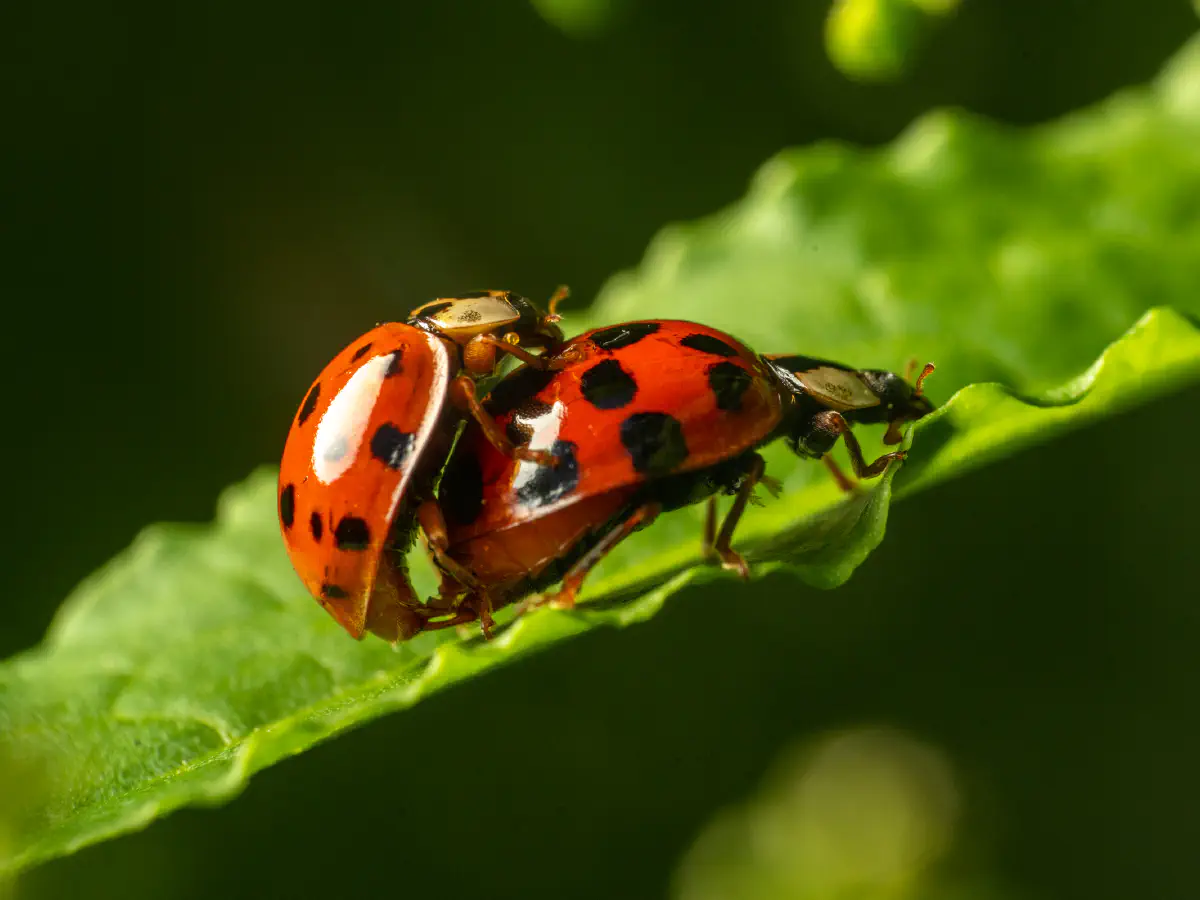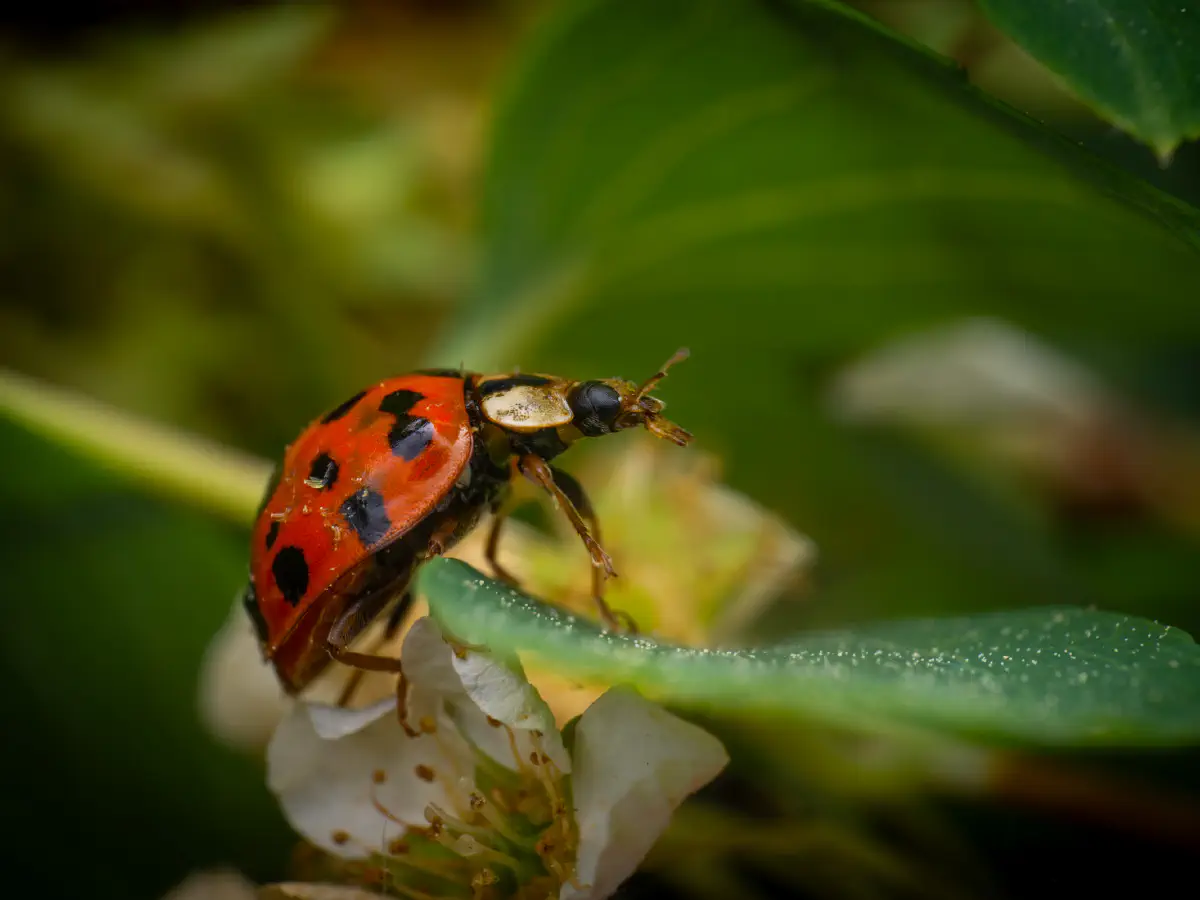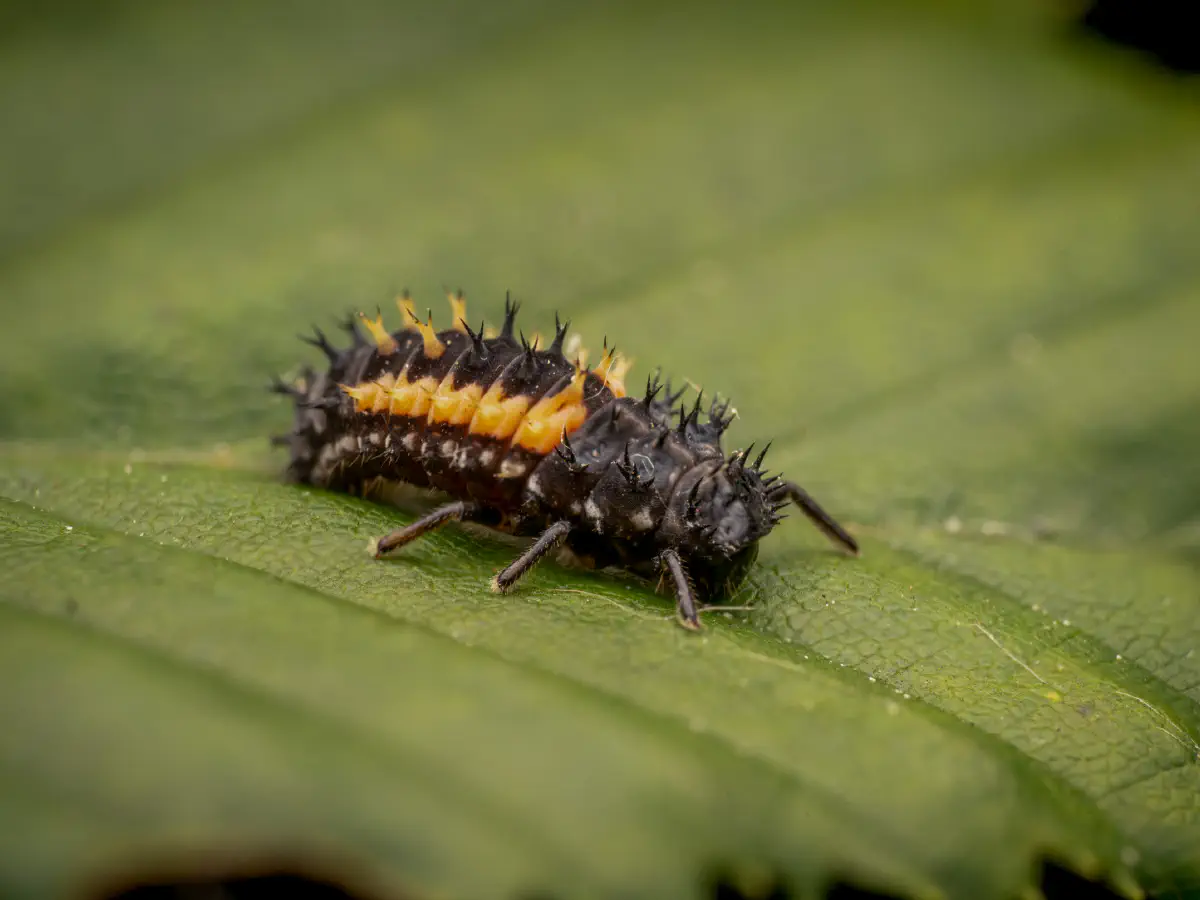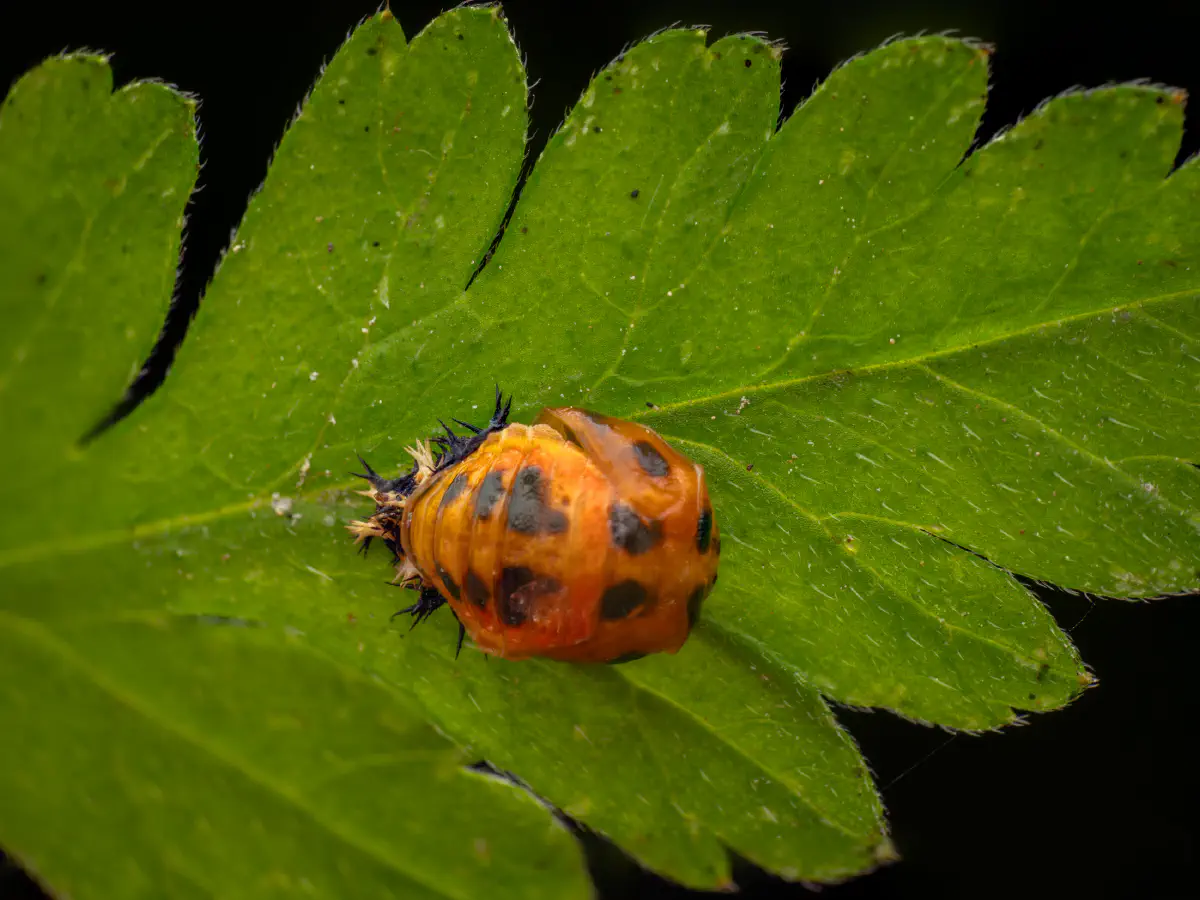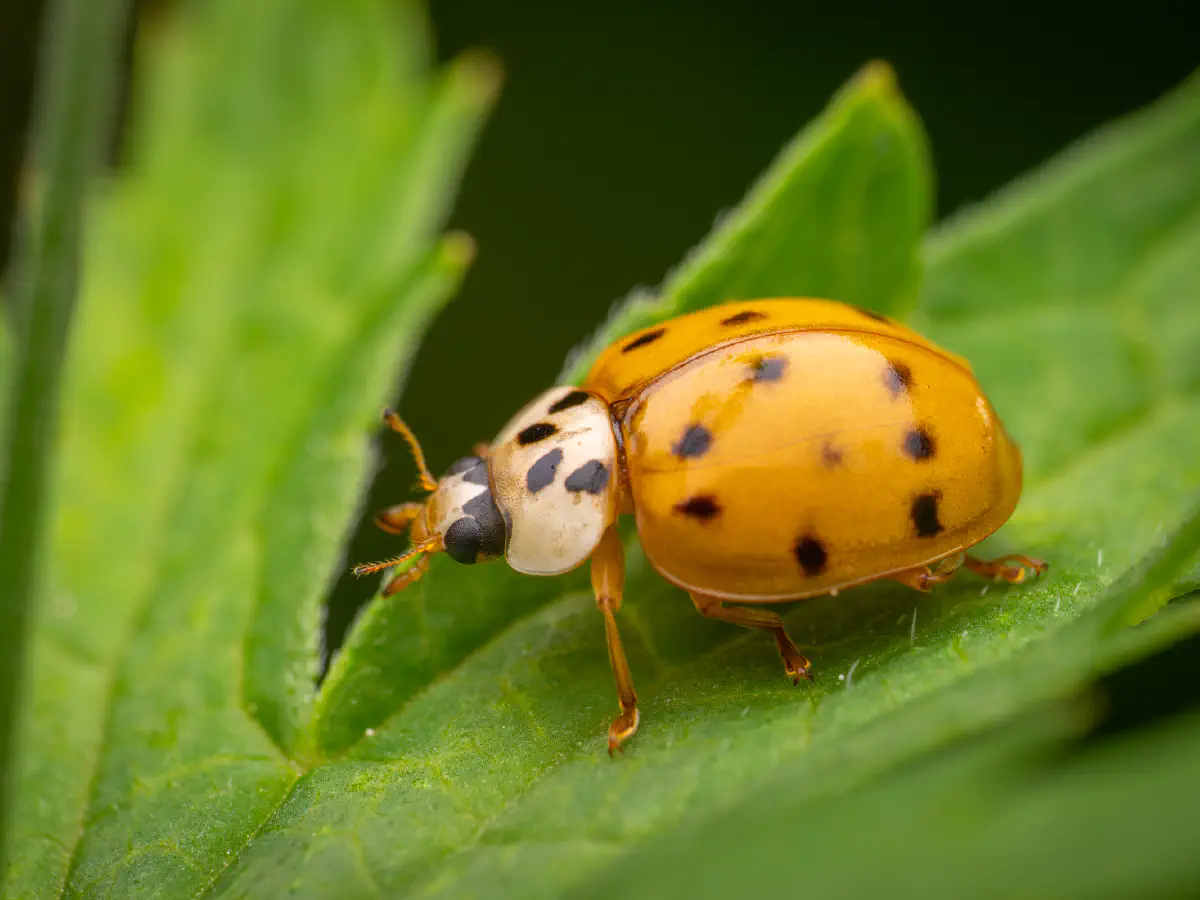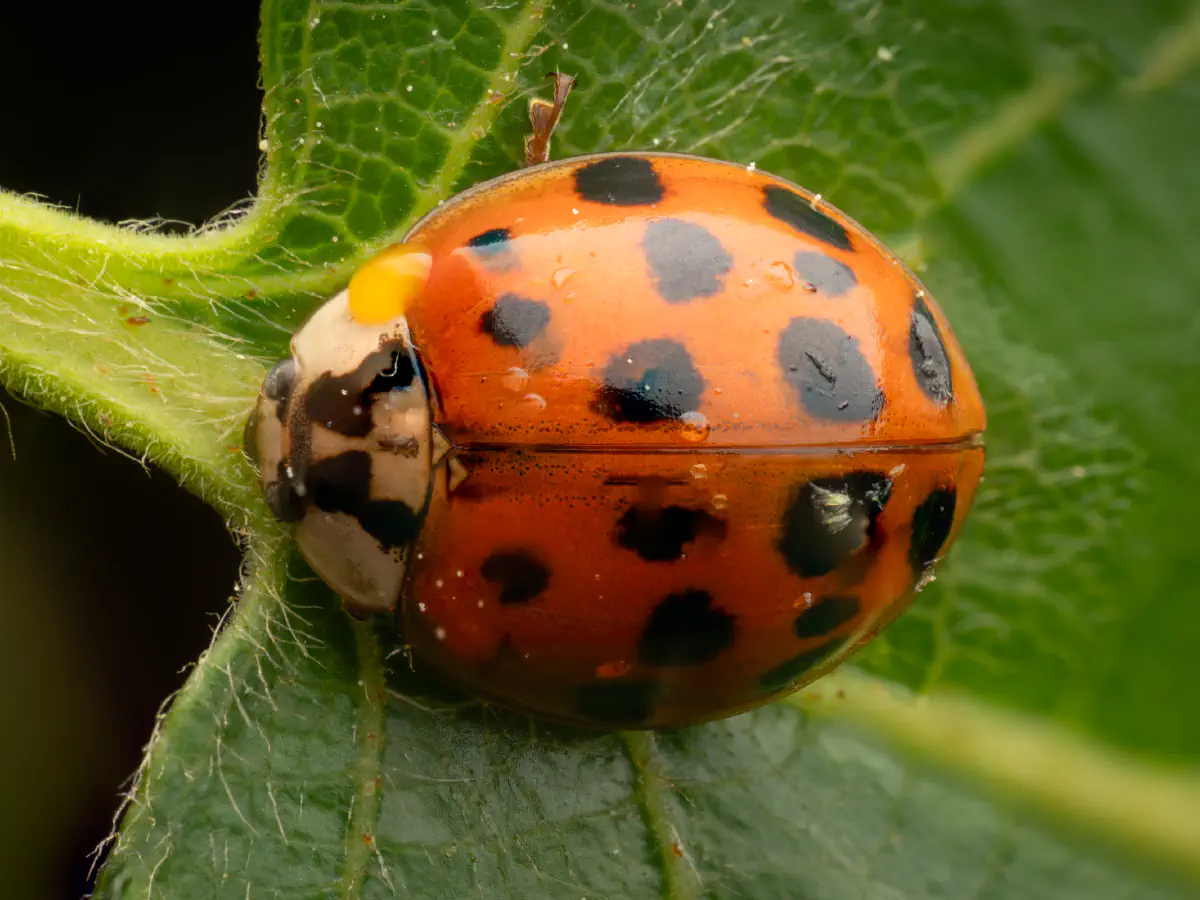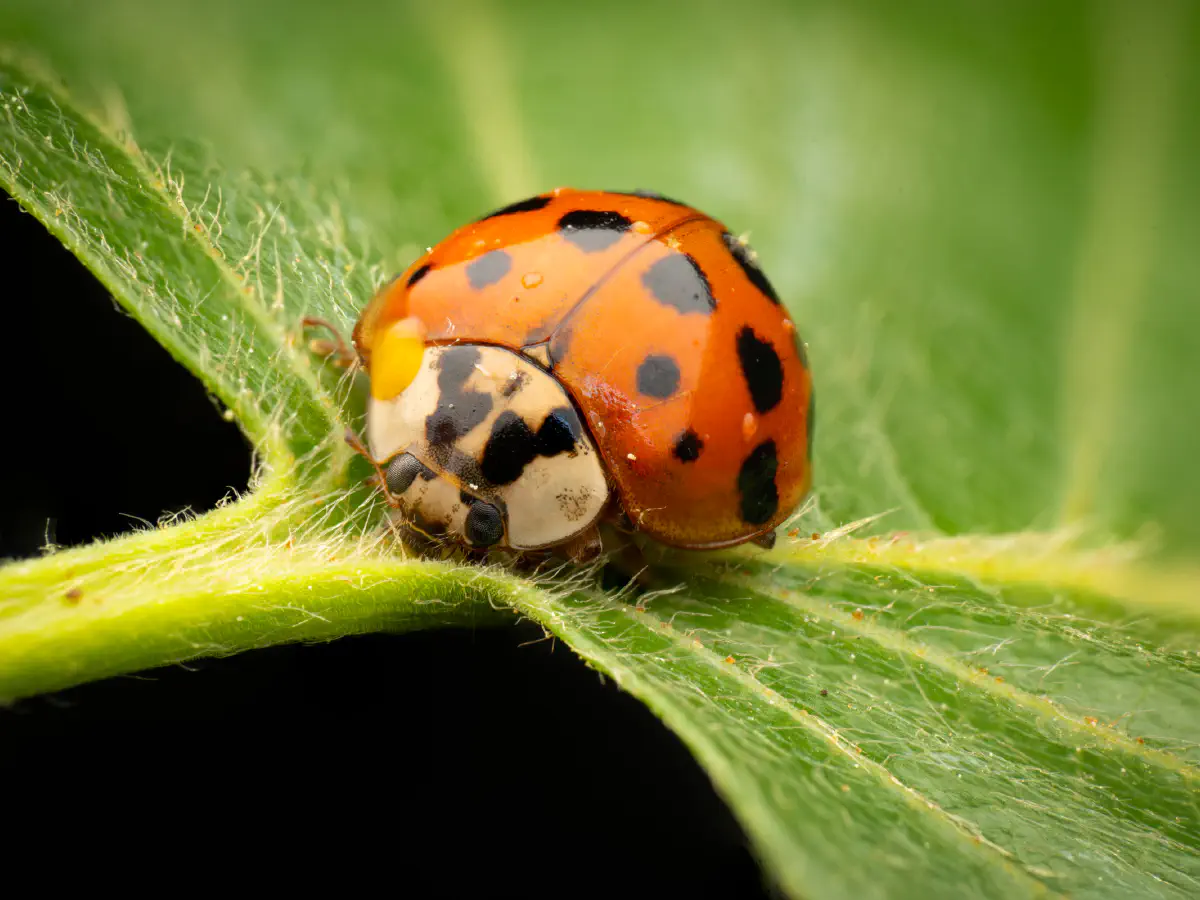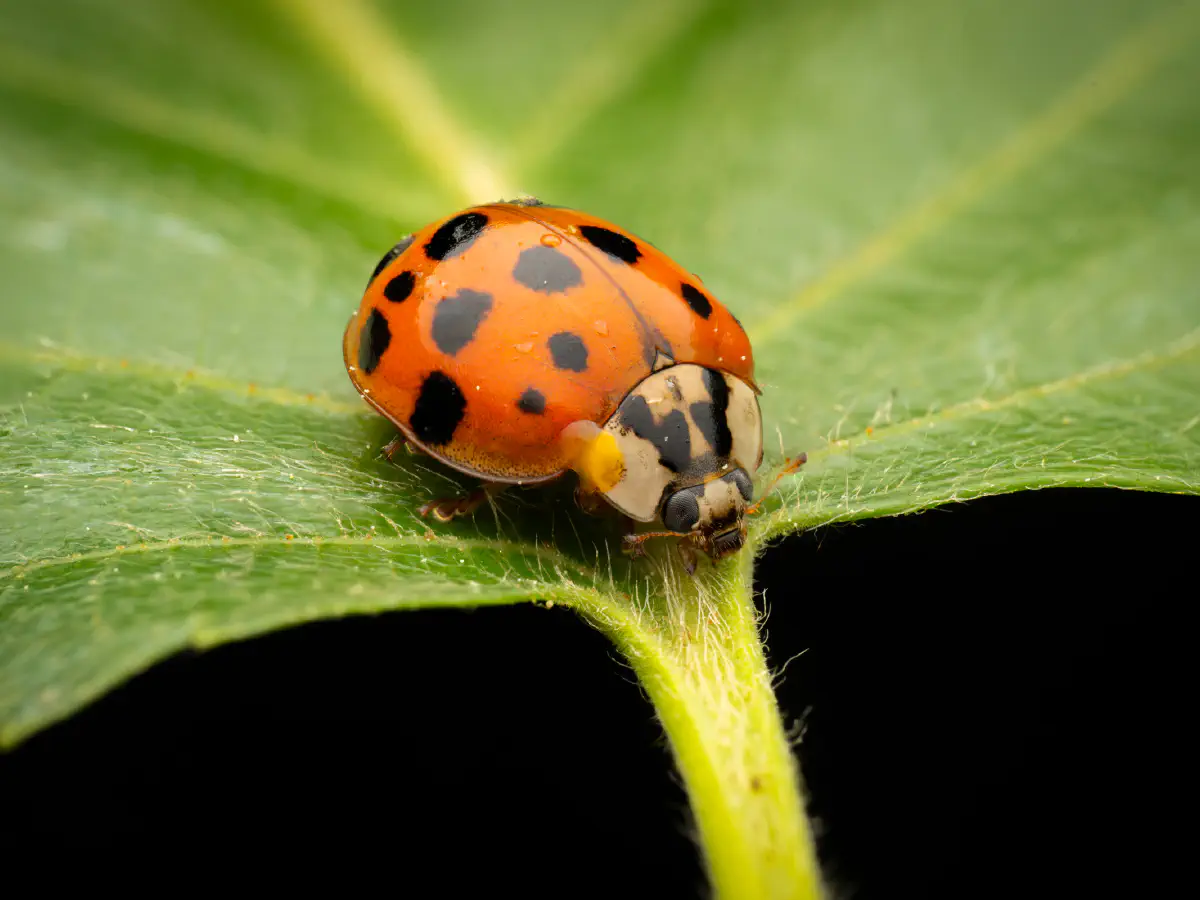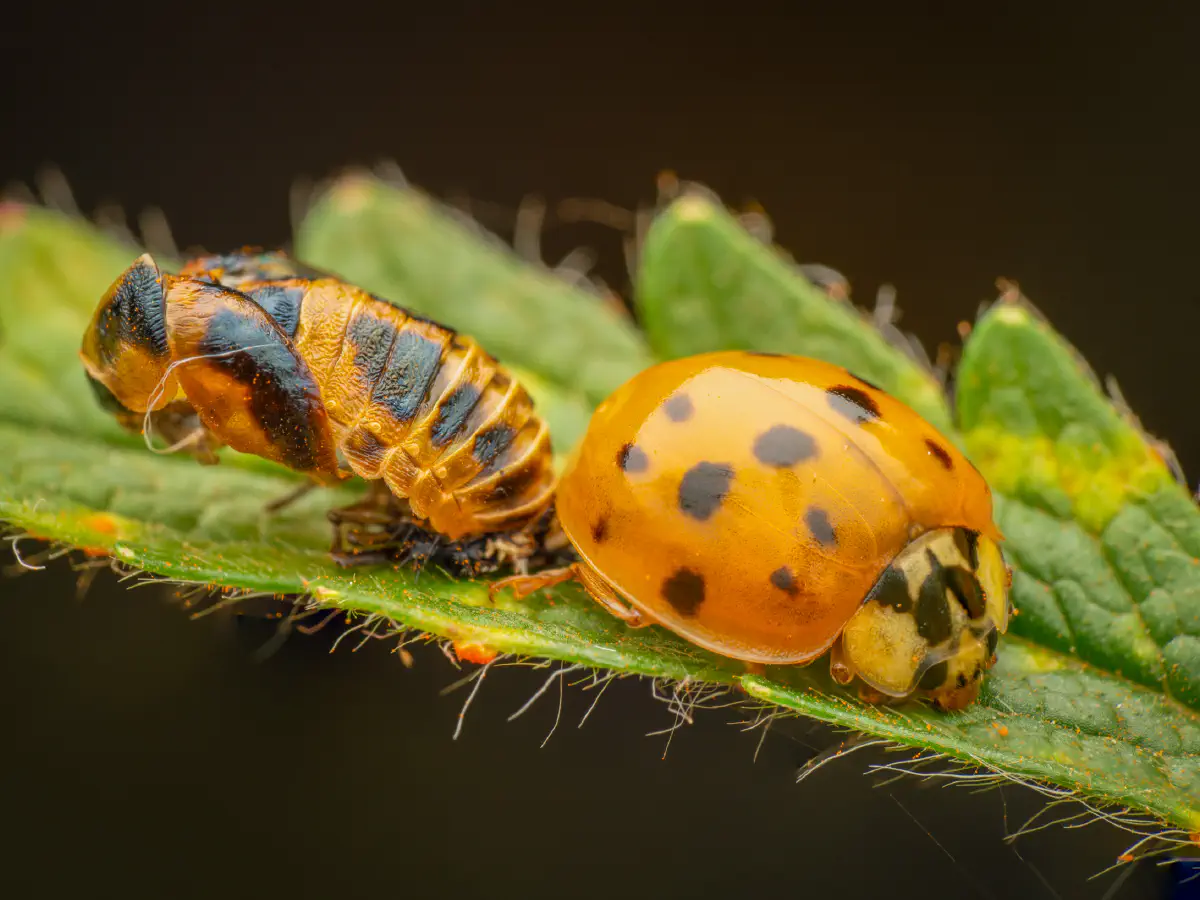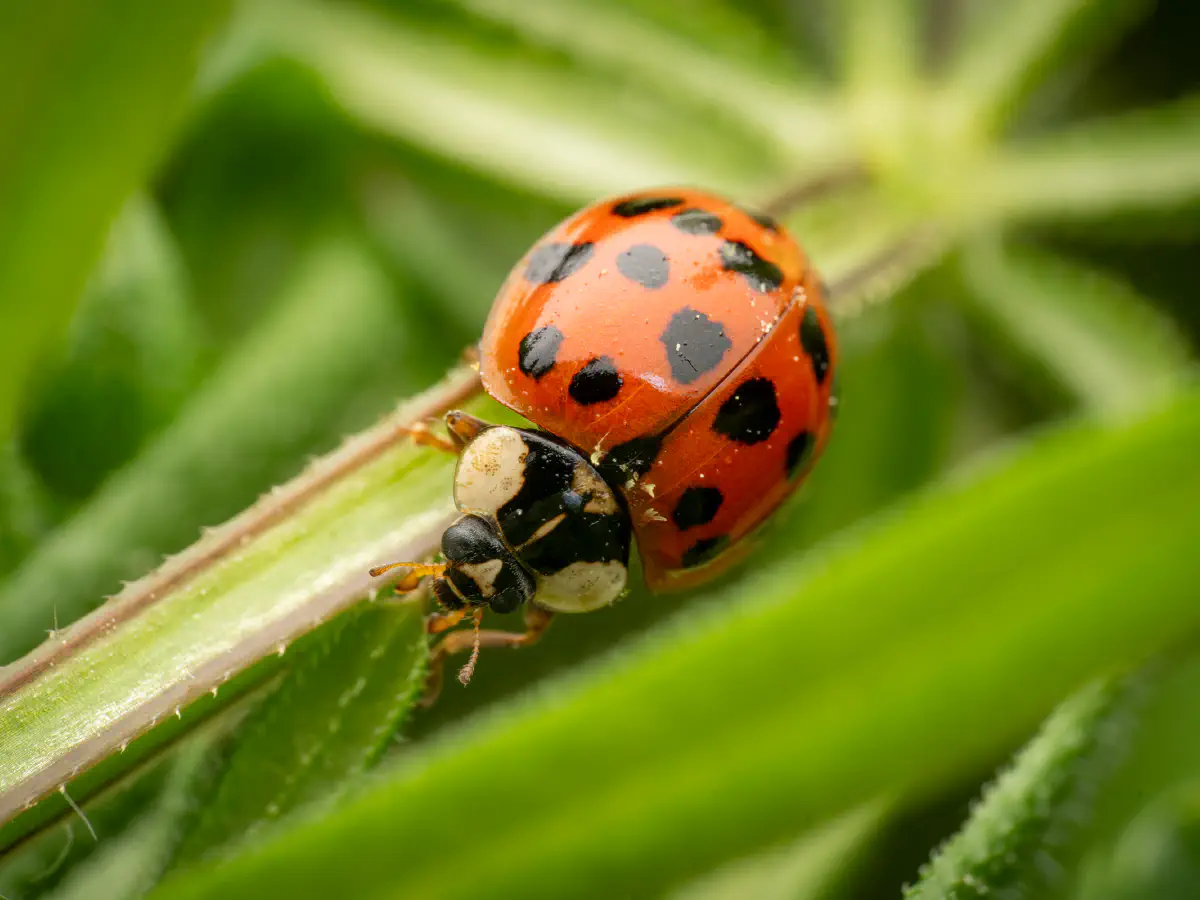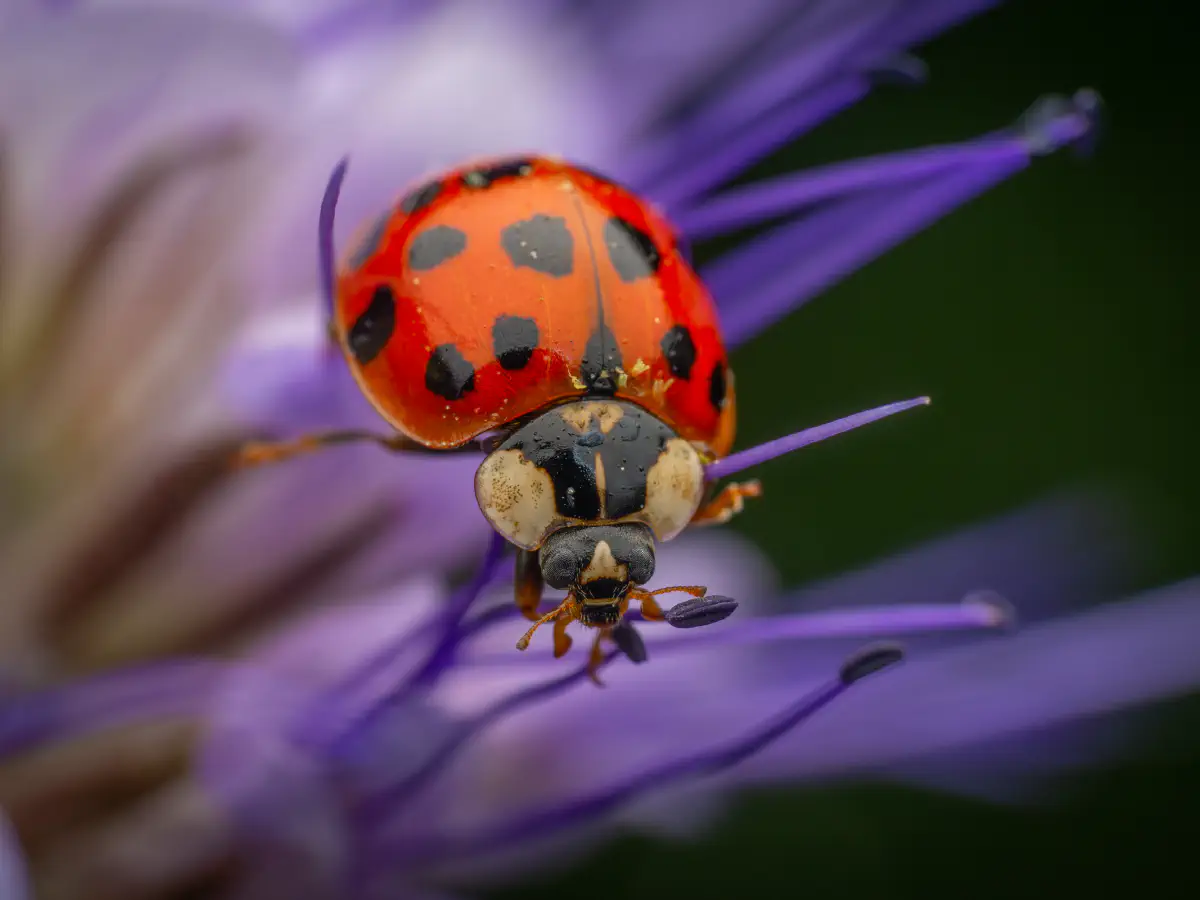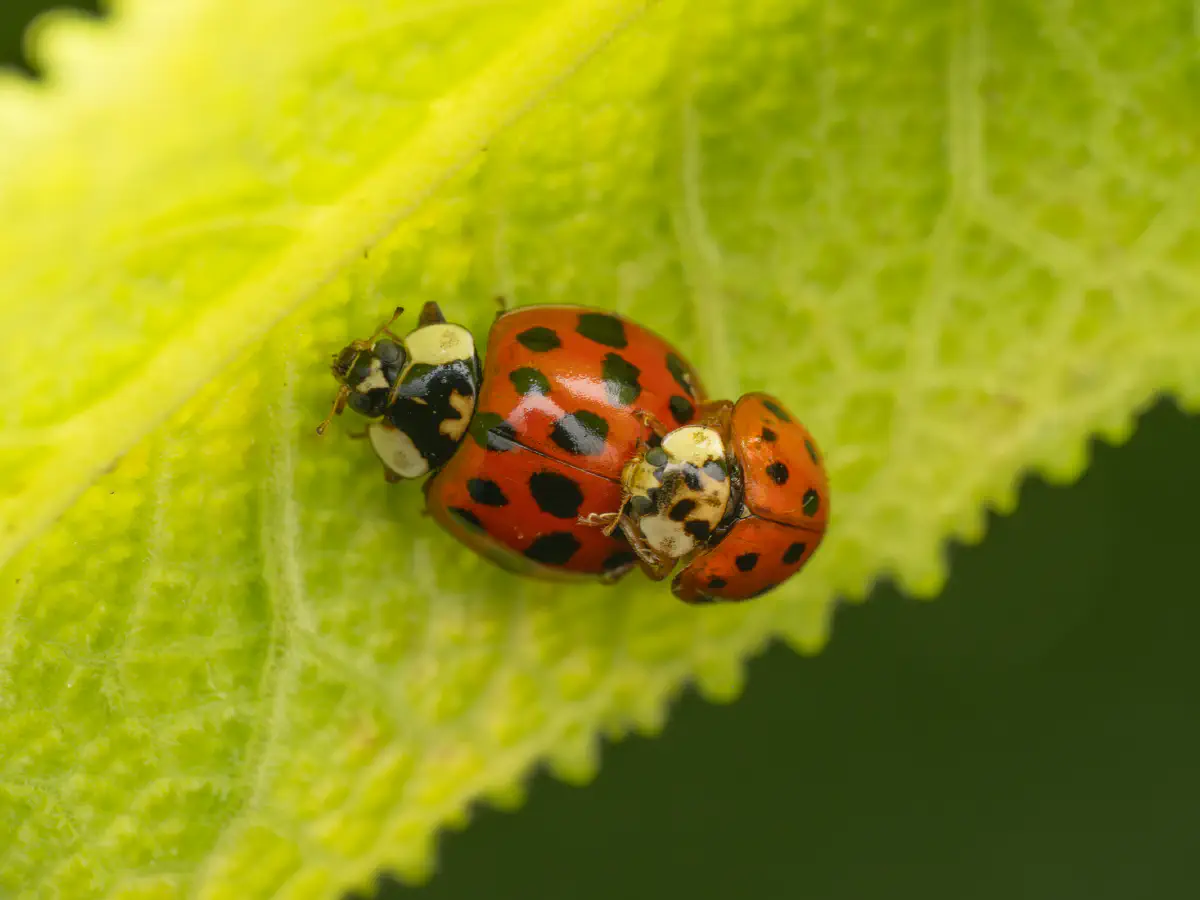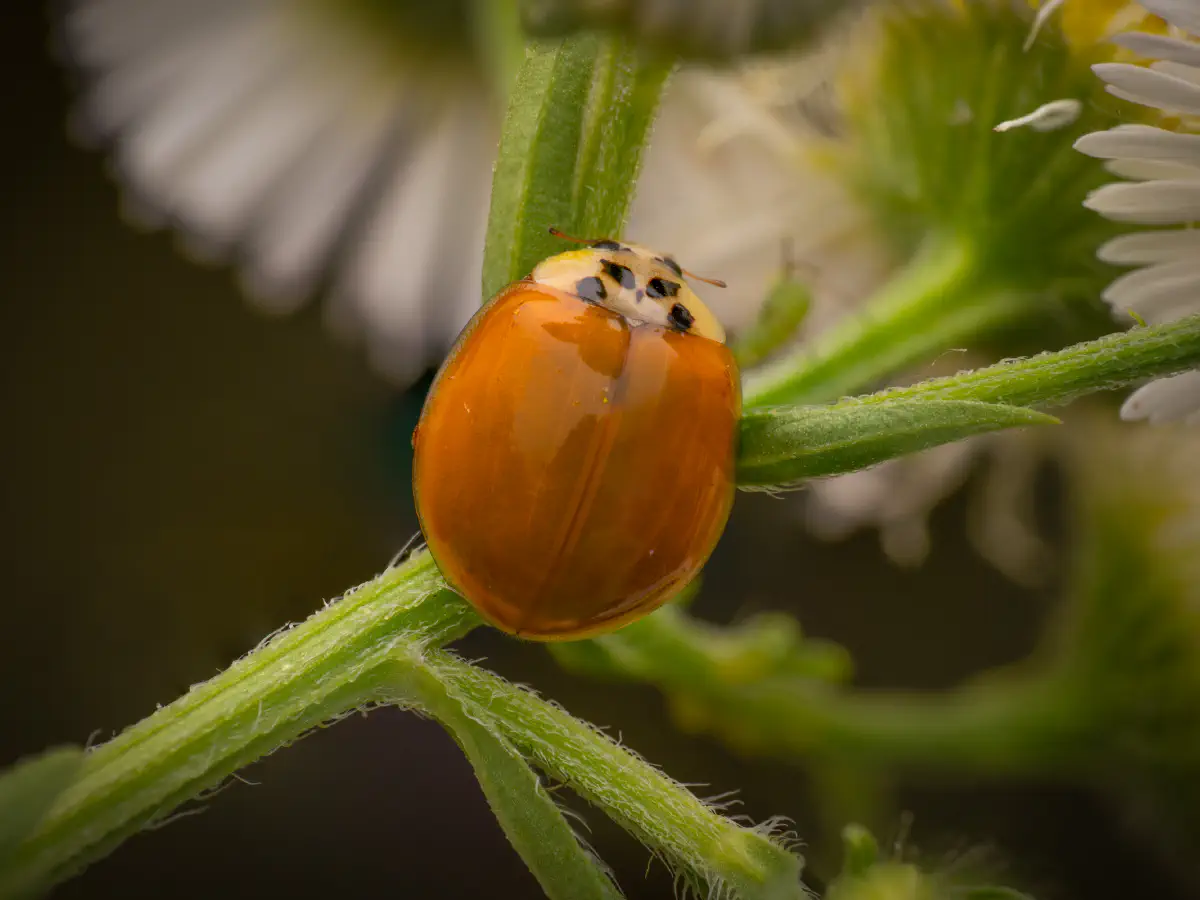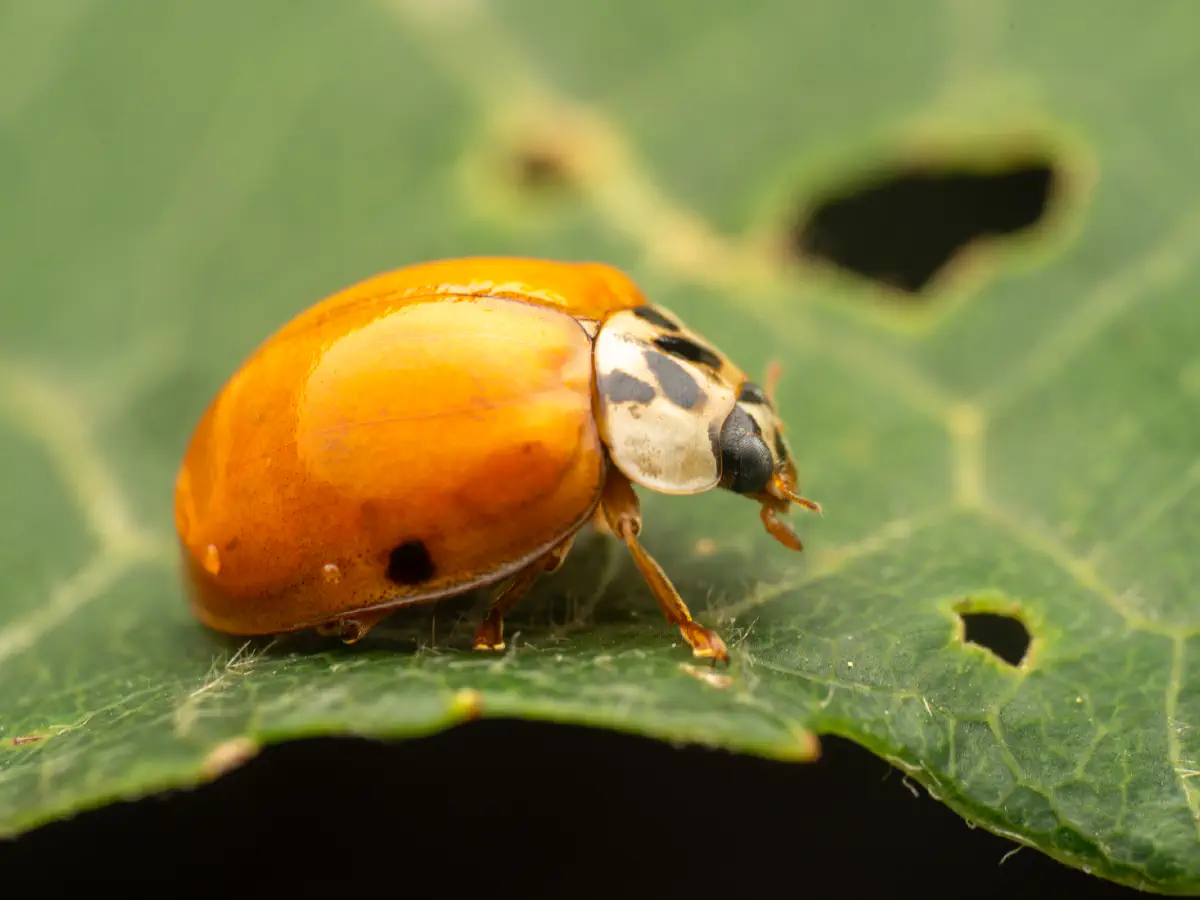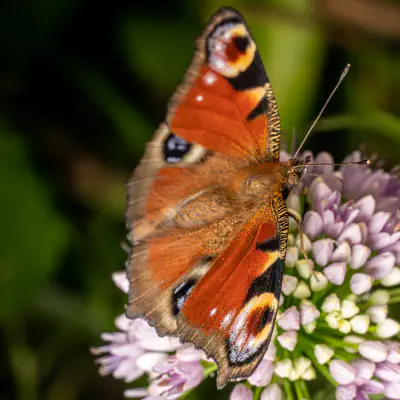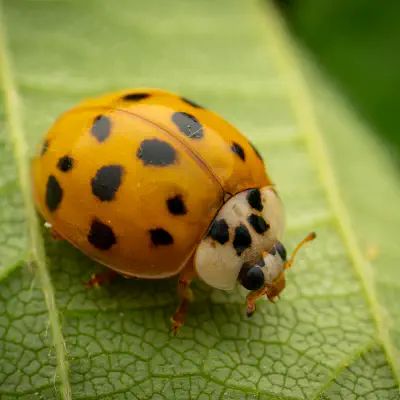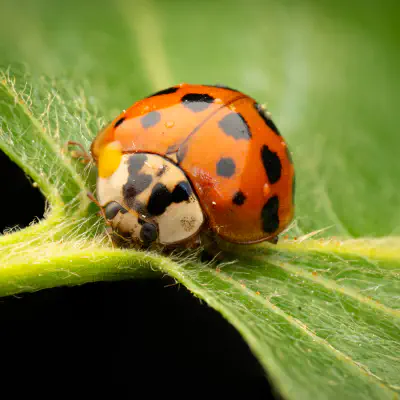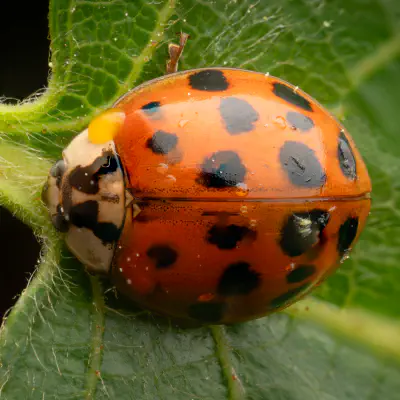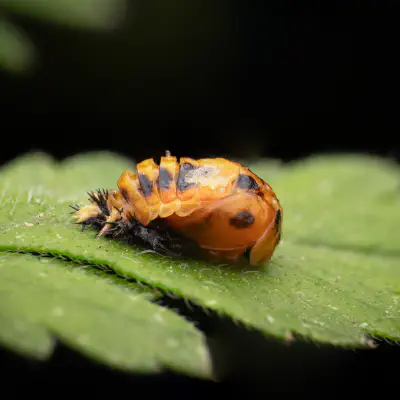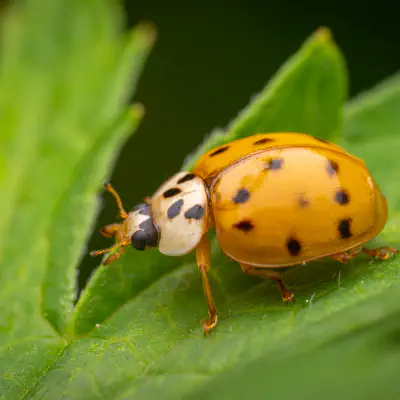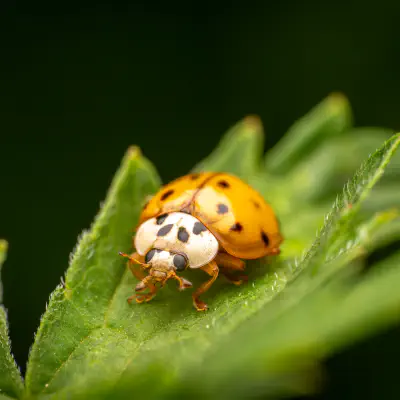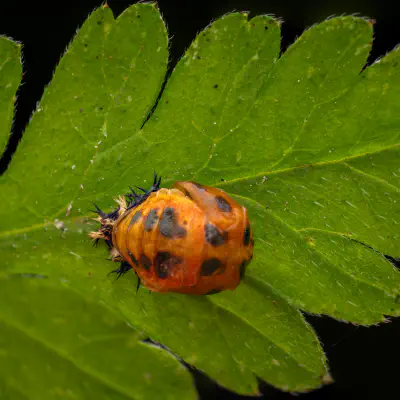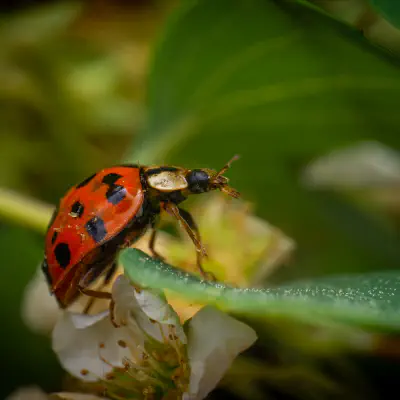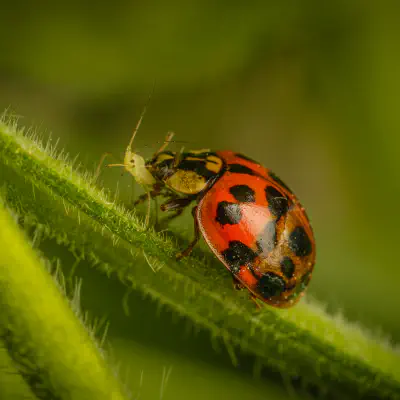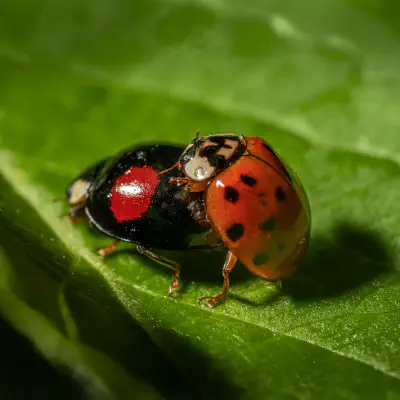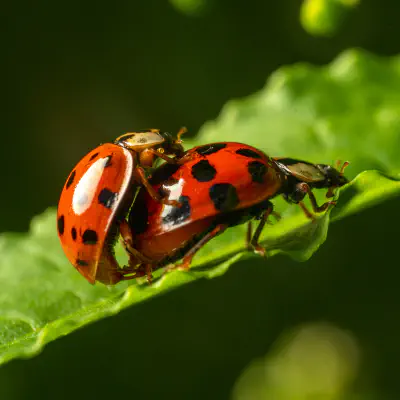Harmonia axyridis is a typical coccinellid beetle in shape and structure, being domed and having a "smooth" transition between its elytra (wing coverings), pronotum, and head. It ranges from 5.5 to 8.5mm in size. The common color form, f. "succinea", is orange or red in colouration with 0–22 black spots of variable size. The other usual forms, f. "conspicua" and f. "spectabilis", are uniformly black with, respectively, two or four red markings. The pronotum is
white with variable black patterning, ranging from a few black spots in an M formation to almost entirely black. The underside is dark with a wide reddish-brown border. Numerous other forms have also been recorded. Extreme forms may be entirely black, or feature complex patterns of black, orange and red. Color polymorphism is likely hereditary but might depend on the location and time of year in which the pupae are exposed to different temperatures.
Darker color variations are more common in Asia than in North America. Eggs range in shades of yellow depending on their age but turn black a day before they hatch. On average they are around 1.2 mm in length. The large size of this beetle is usually the first clue to its identification. Despite variation, this species does not generally overlap in pronotal or elytral pattern with any other species, except in unmarked orange or
red forms. In Europe it is similar to the much smaller Adalia decempunctata, while in America it is similar to the much smaller Mulsantina picta and spotless forms of Adalia bipunctata. When identification is difficult, the underside pattern usually enables a reliable conclusion. Identification is most simple for the common forms, while less common varieties may take longer to identify. They always have reddish-brown legs and are obviously brown on the underside of the abdomen,
even in the melanic colour forms.
